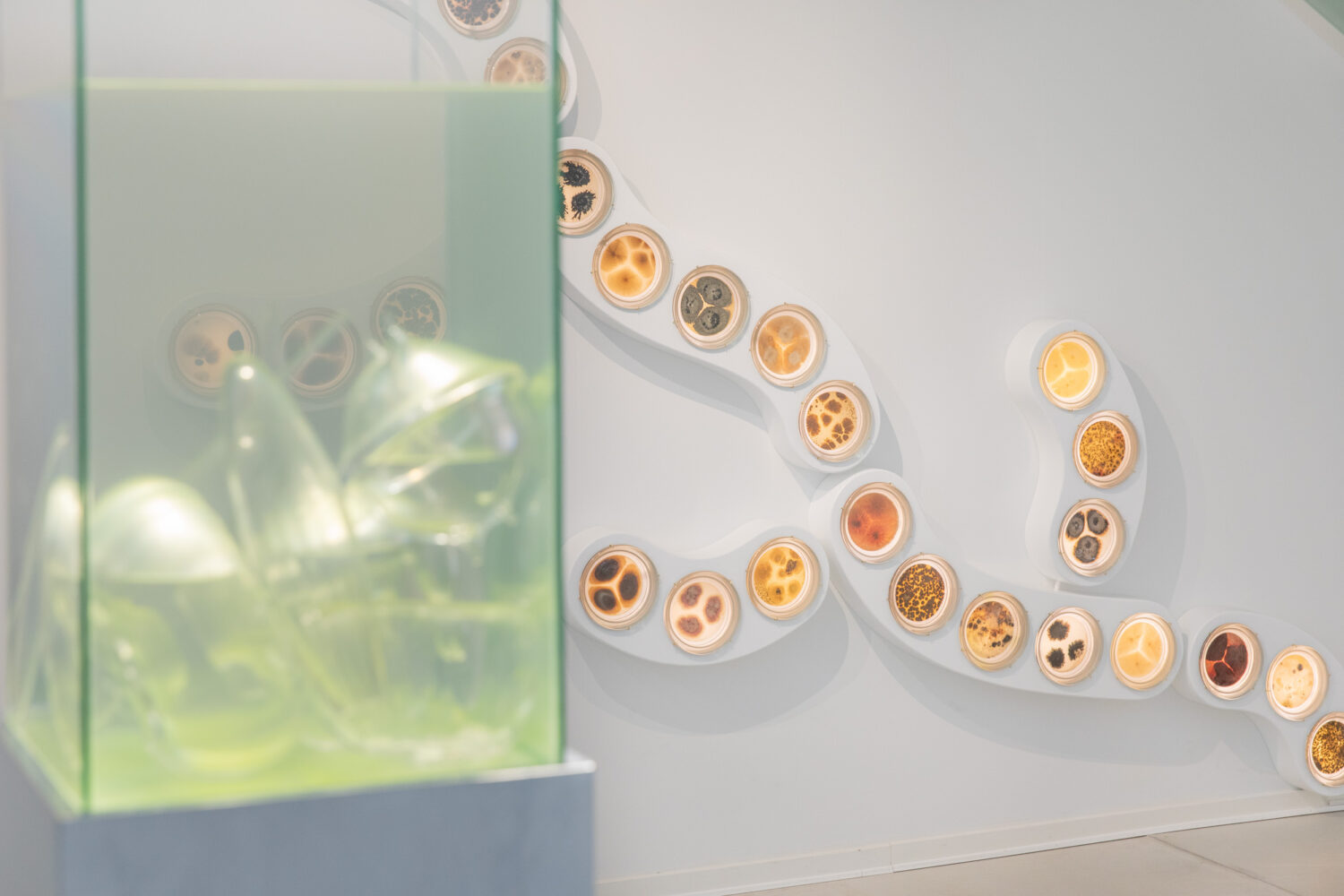In early 2022, the Ebeltoft Glass Museum welcomed a new director, art historian Mikkel Elming, who has since initiated extensive changes at the museum. Just over a year later, the museum has premiered a new exhibition featuring Studio ThinkingHand, a new name, a new visual identity, and, notably, a new exhibition strategy.
The museum’s new name, Glas, signifies a focus on the material and a smart shift to a more accessible and internationally recognizable name. It draws a parallel to the rebranding of the ceramics museum Grimmerhus as Clay in 2015. The visual identity was created in collaboration with Stupid Studio. The “A” in the logo is heavy and fluid, resembling the molten glass mass, a subtle reference to the materiality of glass.
The museum shop has been relocated from the far end of the museum to a more logical location near the entrance and ticket sales area. This improvement will create space for an expansion of the museum’s exhibition area when the renovation is completed.
The Ebeltoft Glass Museum was founded in 1986 on the initiative of glass artist Finn Lynggaard. Over the years, with the support from artists and patrons, the museum has gathered over 1600 international glass art pieces for its collection.
While initially being at the forefront of experiments within studio glass, the museum and the Danish glass art scene have long celebrated excellent craftsmanship. This focus has occasionally come at the expense of the contemporary artistic vitality that characterizes other art movements. This is likely due to the respect for the craftsmen who master the demanding material, as well as the fact that glass art does not have the same long history as other art forms, with only about 50 years on its resume. Therefore, it is gratifying that the museum’s new strategy aims to “bridge to a broader art scene with glass as a starting point,” as there is a need to explore new paths in Danish glass to operate on the same level as other artistic mediums.

An exhibition at the intersection
The exhibition EVOLUTIONS by the Danish-Australian artist duo Studio ThinkingHand marks the beginning of the museum’s new exhibition strategy. Studio ThinkingHand, composed of Rhoda Ting (AUS) and Mikkel Dahlin Bojesen (DK), has been attracting attention since 2016 as one of the most interesting and innovative artist collaborations on the Danish art scene. Their works exist at the intersection of art, natural science, philosophy, and technology, delving into the current debate on human relationships with climate, flora, and fauna. In EVOLUTIONS, they provide new perspectives on the history of evolution.
The exhibition is their most comprehensive presentation to date and extends across multiple rooms in the museum. Short texts accompany the artworks, offering enough information to help navigate through the complex themes.

A unifying element in the exhibition is the use of glass, which is incorporated into the majority of the artworks in the form of molded “petri dishes” with fungal mycelium, “ice core drillings,” and sculpturally shaped animal brains. Glass also plays a role in the video work “Habitats,” created specifically for the museum, where seahorses, octopuses, and other marine creatures interact with an underwater man-made glass habitat.
The analog works stand out the most. Their strength lies in the meticulous scientific exploration and artistic communication of a future scenario built on regenerative methods and coexistence with the Earth’s invisible organisms. Studio ThinkingHand masterfully stages this beautiful and thought-provoking concept.
Studio ThinkingHand as the opening exhibition for the new exhibition strategy is a well-chosen decision.
It will be exciting to see how the museum will act as a platform for glass art in the coming years, where technical skill and sharp artistic perspectives go hand in hand.
Bio
Mette Bielefeldt Bruun holds a master’s degree in art history. She has specialized in design and crafts with a particular expertise in glass, ceramics, and textiles. She previously served as the academic director at Holmegaard Værk and now works as an independent curator and cultural communicator. Additionally, she is responsible for glass art and glass design as a subject expert at Lex.dk
Current theme: Urban Space
In connection with the Architecture Capital 2023, Formkraft explores crafts and design in public spaces and built environments. This thematic publication provides a platform for the latest research and work within crafts and design.
Where and how is contemporary crafts and design established in the urban space? What actors are involved? What lessons can we learn from history?
Additional reading
The Formkraft archive holds a treasure trove of articles about our shared history of crafts and design. These articles tell the story of professional development and Danish cultural history from 1948 to the present. Search for various topics in the archive or browse through the journals on the Journal Shelf.
Atmospheric layers in a human space
Receive a newsletter
Sign up for Formkraft’s newsletter and receive information about new articles as well as tips on relevant conferences and books. Sign up here.


